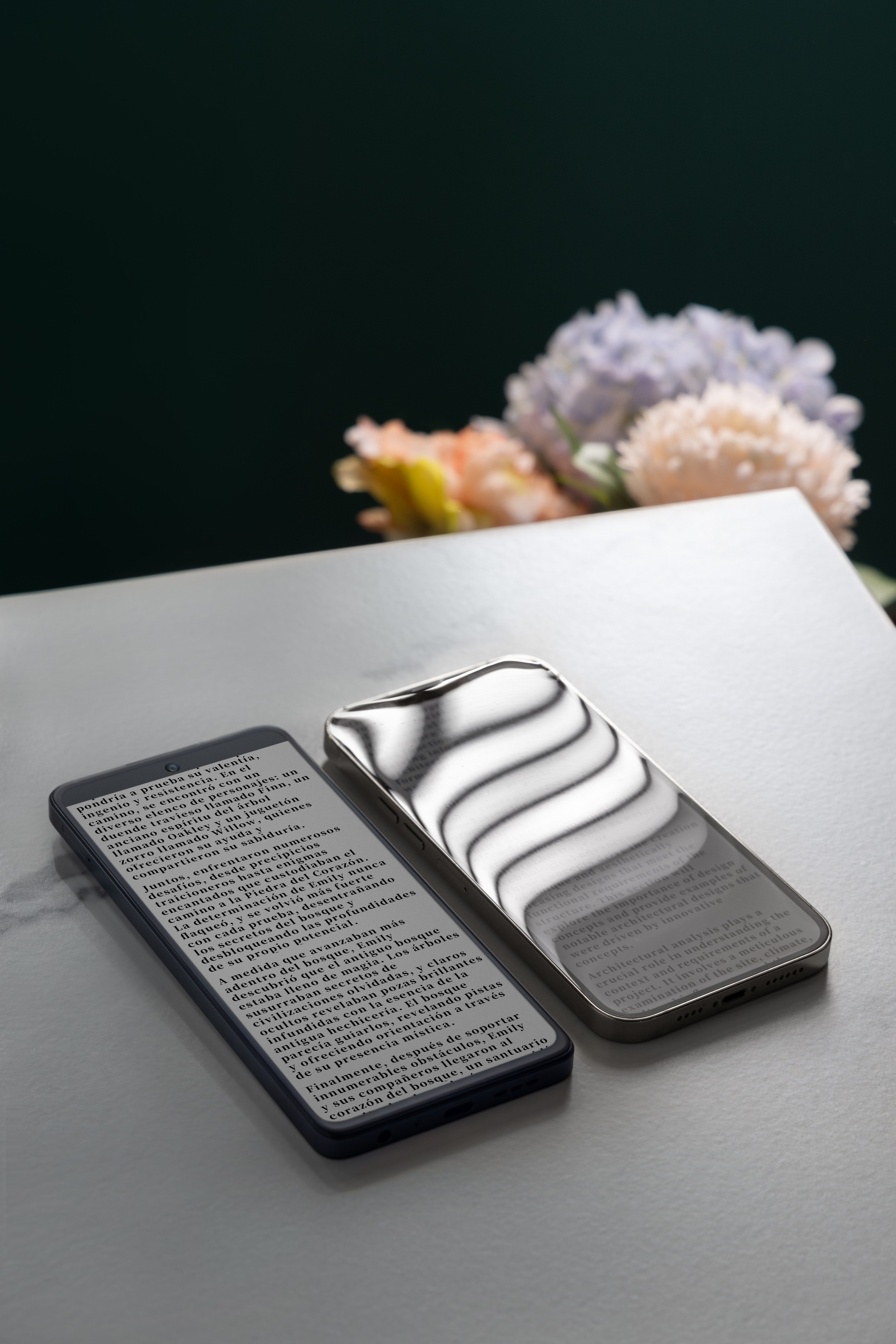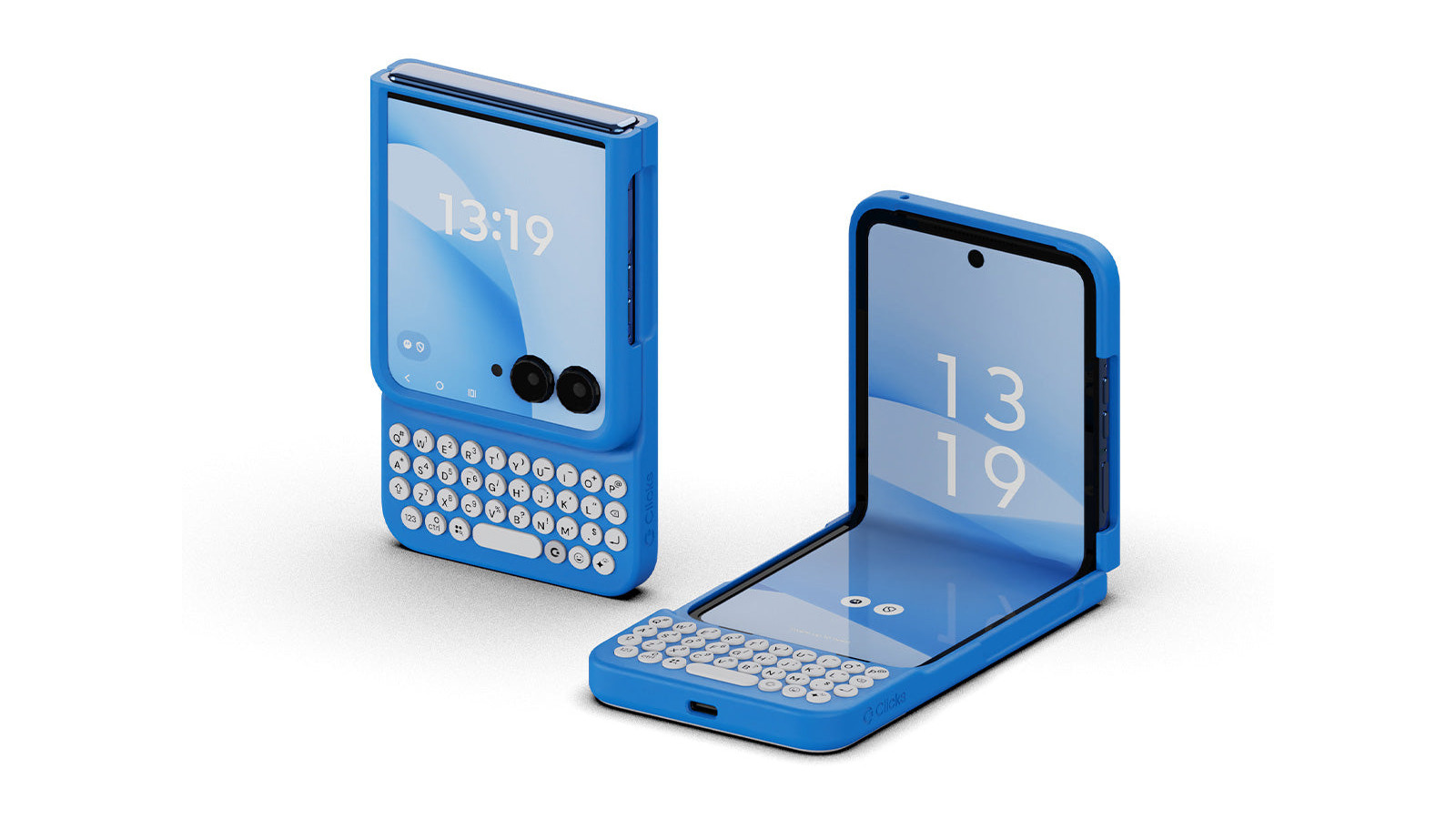The TCL 50 Pro NXTPAPER is a smartphone with a low price, a svelte screen and a sinister side
TCL is a lesser-known titan of consumer technology. Its new NXTPAPER tech makes for a neat multifunctional smartphone. But what’s the catch?
You probably haven’t heard of TCL, a Chinese company that hails from Huizhou, Guangdong province, and is the world’s second-largest manufacturer of television sets. It also makes washing machines and mobile phones, among other things, and has ambitions to create content too; the latter is exemplified by TCL’s ownership of the naming rights to the famous Grauman's Chinese Theatre in Hollywood, or the TCL Chinese Theatre as it is now known.

TCL 50 Pro NXTPAPER
This is the company’s new TCL 50 Pro NXTPAPER, a mobile with a difference thanks to its hybrid screen. Despite its very affordable price, the 50 Pro has a large 6.8-inch FHD+ display, a decent 32MP front camera and 108MP rear camera, and 512GB of internal storage. The cover isn’t made from conventional metal, glass or plastic, but a carbon-neutral fibre basalt material, available in Moon Grey and Midnight Blue.

The TCL 50 Pro NXTPAPER (left) has a non-reflective screen
The phone’s party trick is its adaptive screen, equipped with a matt coating to minimise blue light and glare. This not only helps viewing the screen in direct sunlight, thanks to automatic control of colour temperature, but also reduces eye strain in the evening. That’s paired with ‘Max Ink Mode’, which swaps the conventional display for e-ink and is activated by a physical switch on the side of the unit. This makes it perfect for reading or note taking (with the optional T-Pen), with the added bonus (or not) of halting apps and notifications.

At night, the screen minimises glare
The 50 Pro effectively transforms into an e-reader like a Kindle, it also gets e-reader-style battery life, with up to seven days of reading and no less than 26 days on standby. In practice you’ll be switching between modes if you’re using the 50 Pro as a conventional phone in the interim.
Moving over to a new phone is never easy even though Apple and its Android counterparts try and make it as easy as possible for newcomers to swap between the building blocks of their digital lives. iPhone users can stop reading now, providing they’re happy with Apple’s (lovingly tended and well-perfumed) walled garden.

The screen has an anti-glare coating
Android, on the other hand, is more complex. These days, flipping between the various Android providers requires a whole new set of muscle memories. The basics remain the same, but individual apps, icons, and gestures can all be completely different from one brand to another. TCL is no different. Although the NXTPAPER 3.0 tech at least offers something different in the form of the multi-functional display, you’re still going to have to relearn some basics.

The 50 Pro's screen still works like a conventional smartphone
It's certainly impressive to find so much functionality at such a price point, and the 50 Pro would make an excellent second device for travelling, combining holiday reading with snapshots and light social media use. However, we’d caution against going all-in to the TCL experience. The phone’s ‘cutting-edge AI functionalities’ include text and writing ‘Assistants’, ostensibly to ‘boost user productivity seamlessly’, and as such are similar in scope to offerings from Apple Intelligence, Google Gemini et al.
Wallpaper* Newsletter
Receive our daily digest of inspiration, escapism and design stories from around the world direct to your inbox.

The back cover is made from a carbon-neutral fibre basalt material
TCL wants to go further. Under the auspices of its newly announced TCL Film Machine platform, the company has taken the unprecedented step of launching five short AI-generated (or substantially AI-generated) films. The stated intention, according to PR Newswire, is ‘to build new pathways for creatives to find success in the industry and help shape the future of storytelling’.

The TCL Film Machine website contains this unashamedly AI-generated image
These films are portents of a dark future – they’re available to watch in full on YouTube – the starting gun in a race to the bottom of the content barrel that no amount of human stewardship and oversight can halt or divert. This 404 Media story on the films’ premiere (at the TCL Chinese Theatre, no less) gives you some idea of what to expect, and how TCL wants to pipe this kind of content into its televisions to capture the least discerning demographic and their associated advertising spend.
So, caution. Is this a credible or desirable future, where the dead hand of AI generates media that in turn subsidises cheap, cheap technology? Generative AI becomes increasingly sophisticated with each passing month, but just because you can, doesn’t mean you should. TCL might offer an affordable eco-system, but it’s one where the Ts and Cs are stacked against true human creativity.
TCL 50 Pro NXTPAPER 5G, c£299, TCL.com, Amazon.co.uk
Jonathan Bell has written for Wallpaper* magazine since 1999, covering everything from architecture and transport design to books, tech and graphic design. He is now the magazine’s Transport and Technology Editor. Jonathan has written and edited 15 books, including Concept Car Design, 21st Century House, and The New Modern House. He is also the host of Wallpaper’s first podcast.
-
 All-In is the Paris-based label making full-force fashion for main character dressing
All-In is the Paris-based label making full-force fashion for main character dressingPart of our monthly Uprising series, Wallpaper* meets Benjamin Barron and Bror August Vestbø of All-In, the LVMH Prize-nominated label which bases its collections on a riotous cast of characters – real and imagined
By Orla Brennan
-
 Maserati joins forces with Giorgetti for a turbo-charged relationship
Maserati joins forces with Giorgetti for a turbo-charged relationshipAnnouncing their marriage during Milan Design Week, the brands unveiled a collection, a car and a long term commitment
By Hugo Macdonald
-
 Through an innovative new training program, Poltrona Frau aims to safeguard Italian craft
Through an innovative new training program, Poltrona Frau aims to safeguard Italian craftThe heritage furniture manufacturer is training a new generation of leather artisans
By Cristina Kiran Piotti
-
 The new Google Pixel 9a is a competent companion on the pathway to the world of AI
The new Google Pixel 9a is a competent companion on the pathway to the world of AIGoogle’s reputation for effective and efficient hardware is bolstered by the introduction of the new Pixel 9a, a mid-tier smartphone designed to endure
By Jonathan Bell
-
 Clicks creates keyboard cases for iPhones – now they're also available for three Android flagships
Clicks creates keyboard cases for iPhones – now they're also available for three Android flagshipsSmartphones get a new lease of life with Clicks, which brings a Blackberry-style keyboard to today’s cutting-edge Apple and Android devices
By Jonathan Bell
-
 MWC 2025: 6 of the best conceptual phone designs and future facing tech
MWC 2025: 6 of the best conceptual phone designs and future facing techBarcelona’s Mobile World Congress has become the phone industry’s major hotspot for launches and new technology. Here are six of the best conceptual designs from this year's event
By Jonathan Bell
-
 Meet Samsung’s Galaxy S25 series, designed to set new standards for AI-powered smartphones
Meet Samsung’s Galaxy S25 series, designed to set new standards for AI-powered smartphonesWelcome to the Samsung Galaxy S25 Ultra, Galaxy S25+ and Galaxy S25 – tech editor Jonathan Bell gets some hands-on experience with the new-generation devices
By Jonathan Bell
-
 Nothing explodes its mid-range masterpiece to create the Nothing Phone (2a) Plus
Nothing explodes its mid-range masterpiece to create the Nothing Phone (2a) PlusWe get our hands on the new Nothing Phone (2a) Plus, an upgraded and enhanced smartphone that promises a better photographic experience, smarter software and more
By Jonathan Bell
-
 Can HMD’s Better Phone Project shift the dial on excessive smartphone use?
Can HMD’s Better Phone Project shift the dial on excessive smartphone use?Human Mobile Devices wants to explore ways to diffuse the digital deluge affecting young people’s mental health, and it’s looking for everyone’s help
By Jonathan Bell
-
 Nothing's first limited edition smartphone is 'a story of colour'
Nothing's first limited edition smartphone is 'a story of colour'The Nothing Phone (2a) Special Edition gets back to basics with a simple primary colour scheme to accentuate Nothing’s different design approach
By Jonathan Bell
-
 The Google Pixel 8a is an AI-driven ‘beginner’s smartphone’ that eclipses its pricier rivals
The Google Pixel 8a is an AI-driven ‘beginner’s smartphone’ that eclipses its pricier rivalsWe get our hands on Google’s latest device, the mid-range Pixel 8a, a stripped-down smartphone that still packs an excellent camera, solid hardware and an AI-powered software punch
By Jonathan Bell
